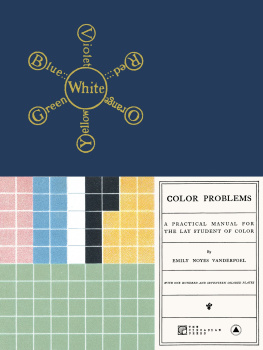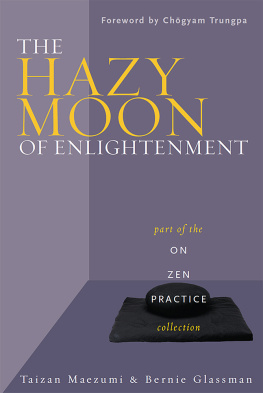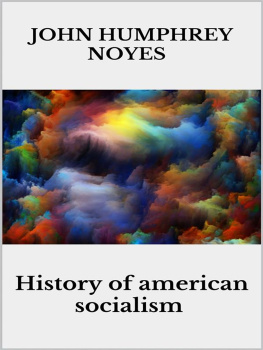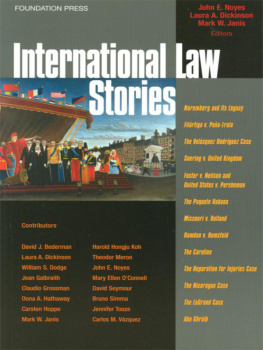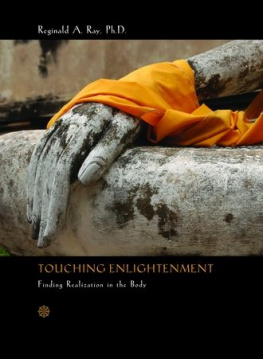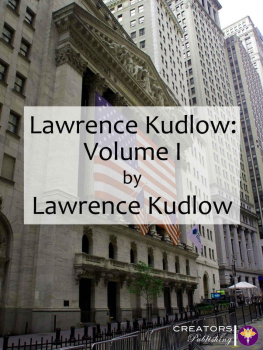Lawrence Noyes - The Enlightenment Intensive: The Power of Dyad Communication for Self-Realization
Here you can read online Lawrence Noyes - The Enlightenment Intensive: The Power of Dyad Communication for Self-Realization full text of the book (entire story) in english for free. Download pdf and epub, get meaning, cover and reviews about this ebook. year: 0, publisher: Zenways Press, genre: Religion. Description of the work, (preface) as well as reviews are available. Best literature library LitArk.com created for fans of good reading and offers a wide selection of genres:
Romance novel
Science fiction
Adventure
Detective
Science
History
Home and family
Prose
Art
Politics
Computer
Non-fiction
Religion
Business
Children
Humor
Choose a favorite category and find really read worthwhile books. Enjoy immersion in the world of imagination, feel the emotions of the characters or learn something new for yourself, make an fascinating discovery.

- Book:The Enlightenment Intensive: The Power of Dyad Communication for Self-Realization
- Author:
- Publisher:Zenways Press
- Genre:
- Year:0
- Rating:5 / 5
- Favourites:Add to favourites
- Your mark:
- 100
- 1
- 2
- 3
- 4
- 5
The Enlightenment Intensive: The Power of Dyad Communication for Self-Realization: summary, description and annotation
We offer to read an annotation, description, summary or preface (depends on what the author of the book "The Enlightenment Intensive: The Power of Dyad Communication for Self-Realization" wrote himself). If you haven't found the necessary information about the book — write in the comments, we will try to find it.
Lawrence Noyes: author's other books
Who wrote The Enlightenment Intensive: The Power of Dyad Communication for Self-Realization? Find out the surname, the name of the author of the book and a list of all author's works by series.
The Enlightenment Intensive: The Power of Dyad Communication for Self-Realization — read online for free the complete book (whole text) full work
Below is the text of the book, divided by pages. System saving the place of the last page read, allows you to conveniently read the book "The Enlightenment Intensive: The Power of Dyad Communication for Self-Realization" online for free, without having to search again every time where you left off. Put a bookmark, and you can go to the page where you finished reading at any time.
Font size:
Interval:
Bookmark:

The Experiment in the Desert
The Barriers to Enlightenment
An Account
How and Why it Works
Sometimes, Into Divine Realms
PART 2
When I came to sit down and face a partner in this amazing quest for truth, I could look back on a Zen meditation practice that stretched all the way back to the 1980s. Id experienced a lot and got to know myself very well. Daizan promised something different in these sixty-four hours and he was right. I was absolutely amazed. After all those years, I got it. I KNEW what all the old Zen stuff was going on about. For me that changed everything
Matt Farren
Im writing this on almost exactly the fiftieth anniversary of the first Enlightenment Intensive retreat a remarkable spiritual technology that rapidly produces life-changing shifts in awareness.
American spiritual teacher, Charles Berner, created the retreat based on a partner-work growth process called The Relating Dyad. He brought this together with study of the Zen sesshin or retreat structure, focusing on kensho (the enlightenment of Zen, literally knowing who you really are). Even at the very first event a pretty austere affair in which twenty-six spiritual seekers faced themselves and each other in the Californian desert people started toget it.
And so it has continued. Over the past fifty years thousands and thousands of ordinary people have discovered who and what they really are. Leading retreats influenced by Berner, Ive personally witnessed many hundreds of these shifts. Each time it is an awesome and humbling experience. So, what is the content of this awakening?
The foundational Enlightenment Intensive retreat was consciously designed to bear no philosophical or religious imprint. As youll see in this book, the results can enrich the life of a Christian, an agnostic, or an adherent of almost any world view. The investigation is directed toward the self and its experiences in the world. The Buddha appears to have guided students (both monastic and lay) in similar investigations and helped them rapidly to realize what he called Entering the Stream.
The entry requirements for this awakening are that the student has seen through the optical illusion of a separate self ( sakkya-ditthi ), together with abandonment of doubt and attachment to rites, rituals and moralism.
In my view this awakening is not an experience but rather a shift in the way we relate to all experiences. This is important because experiences, however transformative, always have a duration: they come and go. This shift doesnt. Once someone has entered the stream, their lives are then on a certain positive track. The Buddha described this as the practitioner entering the family of the noble ones. I believe that the Enlightenment Intensive process is perhaps the most efficient method in history for helping students to take the monumental step of entering this beautiful stream.
Lawrence Noyes, who worked closely with Charles Berner, and I agree that there is far more to the spiritual life than just the entrance. Without the entrance, however, we are left with formalism, ritualism, emotionalism, judgmentalism, possibly even murderous sectarianism. Those who have entered this stream can still make mistakes; those who havent can do a lot worse.
In this particular scheme of development laid down by the Buddha, the next two stages of awakening deal with the push-pull instincts of attraction and aversion. The second stage brings a lessening of these fetters and seems to be experienced by many in a gradual way. The third stage is entered with a complete freedom from these instinctual drives.
The fourth and ultimate stage involves the breaking of more subtle bonds, including attachments to meditation, conceit, restlessness, and all ignorance. As far as Im able to tell, the process of working with a partner has some value in dealing with attractions and aversions, although other practices are likely to be necessary.
Before coming into direct contact with the work of Charles Berner and Lawrence Noyes, I spent many years studying Zen in the traditional manner. I was fortunate in that it worked for me. I was able to find what Id been looking for. I encountered many people, however perhaps the majority who spent years, sometimes decades, without breaking through. This was such a touchy area that in some Zen quarters discussion of the subject of awakening was and remains practically banned.
There was a very different climate around my current teacher, Zen master Shinzan Miyamae. He used to begin many of his morning talks with: The first priority is kensho . The second priority is kensho . The third priority is kensho . Translated as knowing who you really are or perceiving your true nature, this shift into enlightened awareness is celebrated in countless Zen records.
Looking back into the old accounts, particularly those from the golden age of Zen in the Tang dynasty, my teacher noticed that these dramatic shifts frequently occurred in the most public of settings. Rather than the image of the solitary sage finding illumination in a Himalayan cave, it was the hurly-burly of human interaction that seemed to be most productive.
Much of this open interaction had died out or become fossilized in Japan, largely through historical happenstance. Japan underwent a highly influential influx of senior Chinese Zen masters escaping the Mongol invasions in the thirteenth century. These masters by and large spoke no Japanese. But the characters of the Chinese writing system were widely known among educated Japanese, so teacher-student interactions became largely written exchanges in small interview rooms. Gradually sanzen , the interview between the teacher and student, took on a more and more secret, even esoteric, character.
Zen master Shinzan was happy to maintain the sanzen interview system, but also began to explore more public interactions between practitioners a process he called group sanzen , literally group Zen study. By this time, Id heard of but not practised the Berner method. I suspect Master Shinzan had too.
In introducing this process, Zen master Shinzan said, Original face to original face, asking each other the question and looking, like Myo and Eno. Soon Myo found his true nature. Soon you will too. Please find quickly. You will be very happy, and I will be very happy and the world needs happy, awake people. Your practice is important.
Others in the field of Western Zen have recognized the value of this process. Zen teacher and psychologist, John Crook attended an Enlightenment Intensive run by Jeff Love in the 1970s and subsequently wrote:
I was overcome by tremendous emotion that welled up in great waves from within. My breathing of itself became most strange with enormous full exhalations. I felt I was breathing out all the pain and agony of the last few years getting rid indeed of myself. I cried and laughed for a long time in Hazels armswe both experienced the same unbelievable total emptiness of mind. Silence and emptiness. We were gasping out words like incredible, extraordinary, who would have thought it, and so on. As we embraced, we seemed to be standing literally in the portals of the great voidSuddenly I solved my last question from you and then, turning to older koans , I seemed to get direct insight into them one after the other. Old puzzles that had fascinated me for years suddenly yielded obvious answers. The intellectual trickery was gone here was a direct seeing into the meaning. Every time an answer bloomed like a flower in the mind, I got a shock of discovery. Not as full or as overwhelming as finding out who I was, but nevertheless considerableI looked out of the windows of my eyes in a different way from before. I dared not initially believe that satori (awakening) could be achieved in three days. I am amazedI have read and thought about Zen for years, struggled with it indeed, but only now do I see without any doubts its essential point. I am I and act in that. While I have had important and valuable meditative experiences before, they had never undercut the ego process or let me gain an insight into non-duality. I feel now completely sure.
Next pageFont size:
Interval:
Bookmark:
Similar books «The Enlightenment Intensive: The Power of Dyad Communication for Self-Realization»
Look at similar books to The Enlightenment Intensive: The Power of Dyad Communication for Self-Realization. We have selected literature similar in name and meaning in the hope of providing readers with more options to find new, interesting, not yet read works.
Discussion, reviews of the book The Enlightenment Intensive: The Power of Dyad Communication for Self-Realization and just readers' own opinions. Leave your comments, write what you think about the work, its meaning or the main characters. Specify what exactly you liked and what you didn't like, and why you think so.

